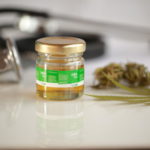This article is a continuation of “Diet versus Performance: Part 1.” It deals with sugar intake among other items, as well as the ‘perfect diet’ that many say is out there, but no one seems to have found quite yet.
Carbonation
Carbonation from soda’s and other beverages does not appear to affect the stomachs emptying rate. Various studies have found no difference in the gastric emptying rates of water, carbonated water, or carbonated carbohydrate drinks. Carbonated colas that contain an average of 160 Calories per 12 ounces and a caffeine equivalent to four ounces of coffee, are a favorite drink of many athletes when they are not in the last few weeks before competition.
As sugar concentration increases, several risks arise. For speed athletes, some studies have shown a greater tendency for muscle pulls such as hamstring tears. Endurance type athletes have the risk of nausea and bloating. Most athletes and fit persons can tolerate a 7 to 10% concentration of glucose, but endurance athletes for long events can often tolerate solutions of up to 15% to 20% glucose. Further, the use of polymers will allow more carbohydrates to be ingested and absorbed while limiting somewhat the overall concentration of the solution.
A fluid replacement rate of 500 ml per hour are appropriate for most athletes, cyclists, and runners during prolonged exercise, but rates of up to 1 to 2 liters per hour have been reported in some events such as the Ironman Triathlon and the Tour de France. The risk with the larger volumes is hyponatremia. For example, beginning an event with 400 ml of an 18% glucose polymer solution in the stomach and drinking 100 ml each 10 minutes will deliver 108 grams of carbohydrate with 600 milliliter (cc) of fluid each hour.
Following a vigorous exercise, there is what exercise physiologist refer to as a “glycogen window.” Ingesting a carbohydrate supplement within 4 hours immediately following exercise will allow the ingested carbohydrate to be converted into muscle glycogen at about 3 times the normal rate (and “the earlier the better” as some data suggests a 50% fall in the conversion rate by 2 hours and a complete return to normal repletion rate by 4 hours).
The above vigorous activity refers to a long-term event such as running. If you are a speed athlete, the “glycogen window” is narrower and ingestion should occur within 1-2 hours after the event. One hour is likely optimal although no studies have pinpointed the exact time.
Muscle glycogen repletion after two hours of vigorous activity generally proceeds at a rate of 5% per hour. Although it may require up to 48 hours for complete muscle glycogen replacement, most replacement occurs during the first 24 hours (post event). This is important for long-distance running and cycling events. If you are an athlete who trains daily, or are performing in a multi-day event, you can use the “glycogen window” to your advantage to get a jump on the normal repletion process and minimize the chance of chronic glycogen depletion, as well as the fatigue that accompanies it.
There is evidence that muscle stiffness that occurs after vigorous exercise is related to muscle glycogen depletion. Consequently, rapid repletion may have an added benefit of minimizing this effect. As a note, many simple carbohydrate snacks such as chocolate chip cookies contain more than 30% fat. Consumption in large quantities may exceed your planned daily fat intake of a suggested 20-30% of daily Calories.
THE PERFECT DIET?
Is there a perfect diet for intense exercisers or athletes? Perhaps, but more importantly, there is significant research and supporting evidence, which show that adequate dietary carbohydrates are necessary for maximum performance. As a matter of fact, at least 10 grams of carbohydrates per kilogram (2.2 pounds) of body weight are required per day. However, it is the absolute amount of carbohydrates that appear to be important, not the percent of total daily Calories that are derived from carbohydrates.
For athletes who perform or compete in multi-day endurance events, there can be an advantage to several weeks of moderate fat intake. The amount of fat consumed should be equivalent to 30% of total daily Calories. However, since good nutrition is a long-term activity, there is no evidence that fat intake for only one day is beneficial in this area. Also, there can be long term health consequences if you consume too much fat each day, i.e., exceed more than 30% daily percentage of your diet.
And what about protein? There is absolutely no evidence that more than two grams per day of protein are beneficial to performance in any athletic activity, including bodybuilding.
In summary, the body’s normal liver and muscle glycogen will support the first 1-2 hours of exercise at 70% VO2 max. without need for supplementation. A good training program will normally postpone the onset of glycogen depletion and fatigue.
Also, ingesting carbohydrates during your event provides an additional source of glucose for energy that will postpone the time at which you may hit “the wall.” However, this is more important for activities longer than 2 hours duration. As a general rule, the body can utilize 60 grams of ingested carbohydrate per hour to supplement muscle glycogen stores. Also, the stomach can handle 1-2 quarts of fluid before nausea occurs.
This will give you some guidelines for developing your own program. Also, using solid food supplements is appropriate as long as enough fluids are consumed with them.
Carbohydrate loading is okay for long-term events like cycling and running, but not for activities such as football and other type team sports or sprinting type activities. When carb loading, eating a high carbohydrate diet for several days prior to the event will maximize internal glycogen stores and prolong the duration of activity until fatigue occurs. However, it will not increase the muscle’s maximum energy output during the event.
The principles of training nutrition and performance are similar to those for any athletic event longer in duration than two hours.






